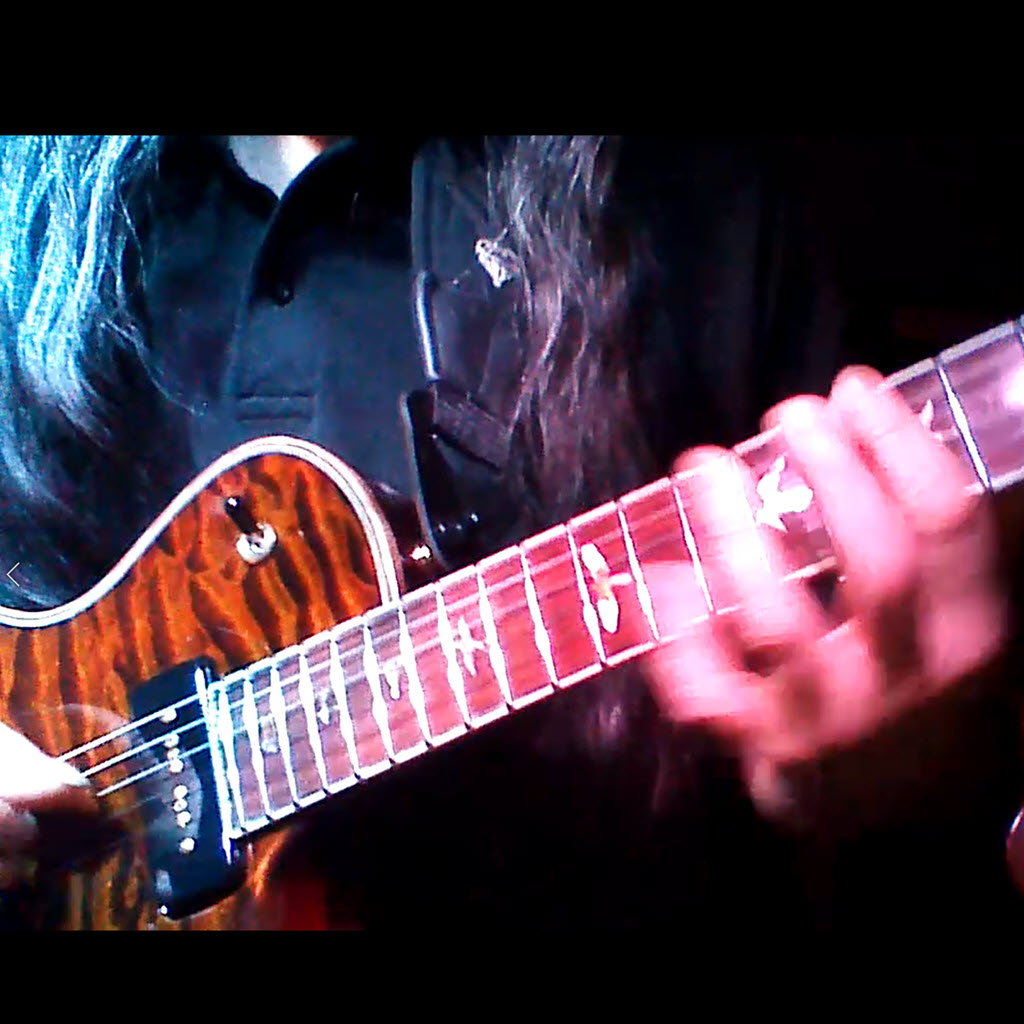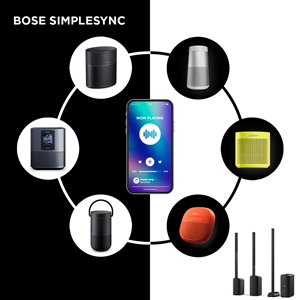L1 Pro Articles
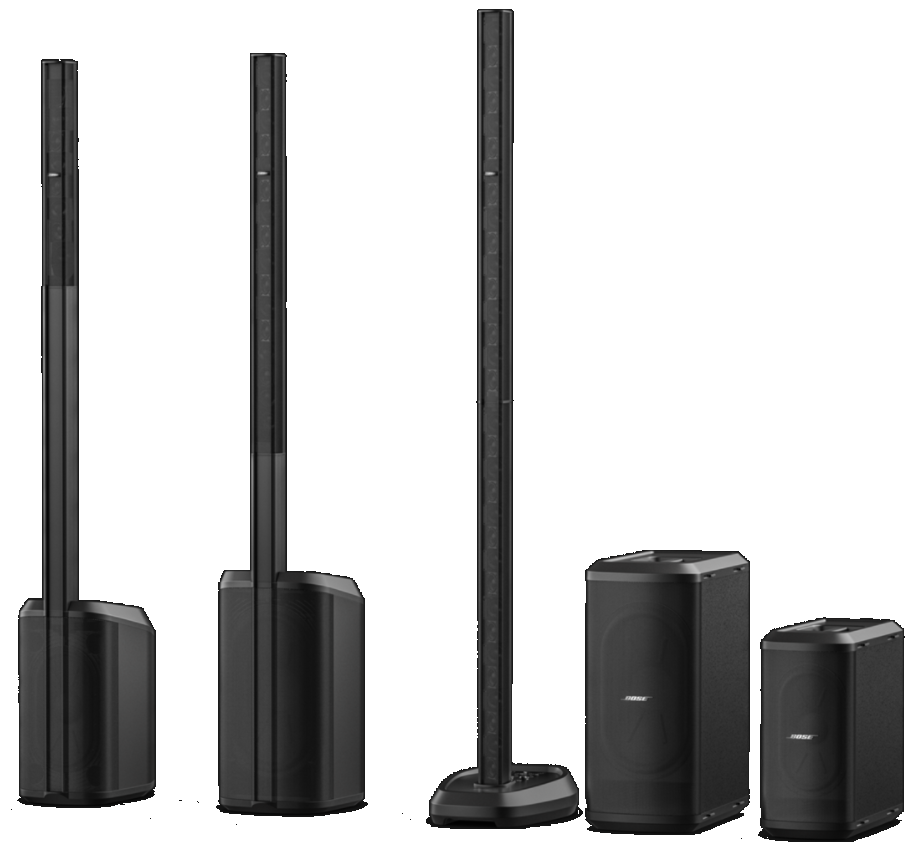
Here are several new articles about the Bose L1 Pro systems.
Should I get an L1 Pro8 or L1 Pro16?
Should I get an L1 Pro16 or L1 Pro32?
Do I Need to Upgrade from the L1 Model II to the L1 Pro32?
Which L1 Pro for Singer/Songwriter/Electric Guitarist
T1 Compatibility With L1 Pro Systems
L1 Pro and SimpleSync Connect L1 Pro to Bose Smart Speaker Group
L1 Pro32 Separating the Sections of the Mid-High Array
S1 Pro with Sub1 or Sub2
If you have comments or questions, please contact me through Twitter or LinkedIn
Bose L1 for a Singer/Songwriter/Electric Guitarist
I am writing this article as a singer/songwriter/electric guitarist playing solo and in bands for home concerts, in clubs, and outdoors. My views on the new L1 Pro line are different when considering other applications.

Spoiler alert: I chose the L1 Pro32 with Sub1. Keep reading to find out why.
Given that any L1 model will sound great with 180-degree horizontal dispersion, my major considerations are portability, coverage, and stage volume.
For Portability, I’m concerned about the size and weight of the heaviest component.
For Coverage, I am thinking about vertical dispersion. The concern is if the audience will be above or below the stage area.
For Stage Volume and Projection, I want to reach the greatest number of people, while performing with the L1 behind me. For that to work, the stage volume must be reasonable. Longer arrays do this best.
Portability
The L1 Pro32 with Sub1 strikes the right balance for me. I’m concerned about the size and weight of the heaviest component. With the L1 Pro32 with Sub1, that’s the Sub1 at 35 pounds, 5 pounds more than the L1 Pro8, and 15 pounds less than the Sub2.
The footprint on the stage is 26″ wide x 21″ deep. There are very few places where I couldn’t find room for this. For comparison, the L1 Model II footprint is 22″ x 22″. It’s still worth noting the L1 Pro16 and L1 Pro8 take less than half the floor space of the L1 Pro32 with a sub.

Coverage
There’s no one-size-fits-all solution here however, the L1 Pro32 with a Sub1 will meet my needs most of the time. The L1 Pro32 has the same vertical dispersion as the L1 Model II I’ve been using since 2007.
I prefer the straight shape 0-degree vertical dispersion. I get great control because there is minimal sound going up toward the ceiling contributing to unwanted reverberation. If the audience will be above or below the stage area, you’ll have to consider the L1 Pro8, L1 Pro16, or F1 Model 812 Flexible Array Loudspeaker.

Sub1 or Sub2
I sing and play guitar, so I don’t need the Sub2. For solo gigs where I use foot percussion, I don’t need big bass. In a band situation, the low-end is provided by the rhythm section. From what I’ve experienced so far, the Sub1 performance is similar to the older B2, and it is smaller and lighter (Sub1 35 pounds vs. B2 40 pounds).
For live sound for a band, I would use two L1 Pro32 systems with Sub2 subwoofers or two F1 Stacks (F1 Model 812 with F1 Subwoofer). I would use the F1 systems if I need to control the vertical dispersion when the audience is above or below the stage level.
I already have two F1 Subwoofers. I didn’t feel the need to get the Sub2.
Stage Volume and Projection
As I said in the introduction, I want to reach the greatest number of people, while performing with the L1 behind me. For that to work, the stage volume must be reasonable. Longer arrays do this best.
I learned from playing the L1 Model II, I can play softer while being heard by more people with a longer array. Up to a point I could reach as many people with the L1 Model 1S as with the L1 Model II, but I had to run the L1 Model 1S louder because it had a shorter array. You can see similar differences between the L1 Pro16 and L1 Pro32 in the chart below.

Since the chart above is calculated at 2kHz, the choice of Sub1 or Sub2 should make no difference.
Note: I won’t run louder than 112 dB (L1 Pro8 max) in the stage, but at that volume, I will reach many more people with the L1 Pro16 and even more with the L1 Pro32. Notice the white bar of vertical dots in the chart above.
If I need to throw sound out well beyond 100 feet, I’d probably use the L1 beside or in front of me and consider using the S1 Pro for a monitor.
When I first looked at the L1 Pro line, I already had all the legacy products. Among those, the L1 Model II and L1 Compact were meeting all my needs. I got the new L1 Pro32 with Sub1 because, at 65 pounds, they outperform my 100 pound L1 Model II.
L1 Pro8
I can use the L1 Pro32 with Sub1 for most situations, so why do I have an L1 Pro8? I need it for outdoor gigs where I am playing to people above me. This happens when performing for extended-care facilities where the people are in lock-down. They open their windows or come out on balconies to hear the music. I need to project the sound upward. I could do this with the F1 Model 812, but I prefer the performance of the L1 Pro8 for this application.
The L1 Pro8 has a tiny footprint at 12.5″ wide x 17″ deep. The power stand is the heaviest component at 31 pounds. The weight difference between this and the Sub1 is negligible.
Portability for these outdoor gigs is extremely important because we’re playing on make-shift stages and often, there are no roads or pathways to where we perform. It’s all carry-in, so lighter is better.
L1 Pro16
The L1 Pro16 is the sweet spot in the family. On stage, the footprint is 14″ wide x 18″ deep. That’s about half the footprint of the L1 Pro32 with a Sub1 or Sub2. The power stand is 4″ taller than the L1 Pro8 power stand (26″ vs. 22″). At a glance, the L1 Pro16 looks only slightly larger than the L1 Pro8. The big difference is the weight of the power stand. By comparison to the other units, it’s a hefty 41 pounds. You can forgive this though. The bass output is similar to the Sub2. I don’t need all that bass support.
The L1 Pro16 has the advantage over the L1 Pro32 because it has the -30 degree vertical dispersion. This serves you well if you are on an elevated stage. Since I already have the F1 systems, this was not a priority for me.
The images above came from Choosing the L1 Pro System That’s Right for You (Youtube)
Portable Power for Bose L1 Pro Systems
This is an update to Portable Power Stations for the Bose L1 systems (June 2020).
Please see the latest version of this information.
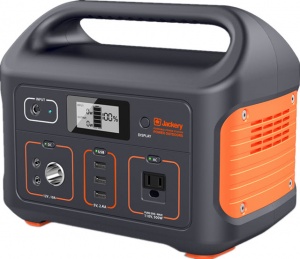

I have run the same tests with the new L1 Pro Systems (Pro8, Pro16, Pro32 with Sub 1) as I did with the L1 legacy systems. The power consumption with the L1 Pro systems is comparable to the L1 Model II with two B1s shown in the previous article. The power consumption is similar for all models. The volume determines how much power you consume. The louder you run the system, the faster you deplete the power.
Using a Jackery Explorer Power Station 500 to run any of the L1 Pro systems and an electric guitar processor you should get 7 hours of music at 80 dBC SPL (and only 2 hours at 110 dBC SPL.) Please see Portable Power Stations for the Bose L1 systems (June 2020) for more details.
Portable Power Stations for Bose Portable PA Systems

Overview
These are preliminary tests using a Jackery Explorer Power Station 500 to run an L1 Model II with ToneMatch Mixer[1], two B1 bass modules and an electric guitar processor. Conclusions: This portable power station should provide power for moderate-to-high volume for at least five hours for a L1 Model II. I expect you could get similar results with an L1 Compact. Note: The L1 Model II can cover at least four times the area of an L1 Compact.Jackery Explorer Power Station 500 Specifications
- Lithium battery power: 518Wh/144,400mAh battery capacity,
- 500W Rated Power and 1000W Surge Power
- Pure Sine wave AC
- 13 pounds
- Time to recharge using AC adapter – 8 hours
System as Tested
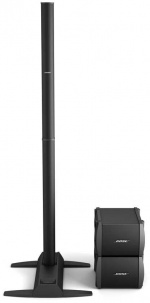
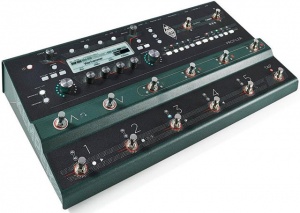
- Model II with two B1 bass modules
- T8S ToneMatch Mixer
- Kemper Profiler Stage
- Approximate draw 12 watts)
- The Kemper Profiler with Remote draws approximately 17 watts was not used for this discussion
- Program material: Rock music with ToneMatch Preset set to DJ/Playback High Volume
- SPL measured at one meter, C-weighted
Results
| Equipment | SPL dBC | Draw on display | Net Watts | Estimated Run Time Hours |
| Calculation 518 Watt-Hours x 85% / Draw in Watts = Run Time Hours | ||||
| Jackery 500 | 0 | 0 | ||
| AC Inverter engaged | 5 | 88.1 | ||
| Power Bar with Surge Arrest | 7 | 2 | 62.9 | |
| T1 with ToneMatch Power Supply | 17 | 10 | 25.9 | |
| T4S with ToneMatch Power Supply | 20 | 13 | 22.0 | |
| T8S with ToneMatch Power Supply | 25 | 18 | 17.6 | |
| L1 Model II with 2 x B1 idle | 40 | 33 | 11.0 | |
| L1 Model II with 2 x B1 + T1 idle | 49 | 42 | 9.0 | |
| L1 Model II with 2 x B1 + T1 | 80 | 52 | 45 | 8.5 |
| L1 Model II with 2 x B1 + T1 | 90 | 57 | 50 | 7.7 |
| L1 Model II with 2 x B1 + T1 | 100 | 72 | 65 | 6.1 |
| L1 Model II with 2 x B1 + T1 | 110 | 193 | 186 | 2.3 |
| L1 Model II with 2 x B1 + T4S idle | 51 | 44 | 8.6 | |
| L1 Model II with 2 x B1 + T4S | 80 | 54 | 47 | 8.2 |
| L1 Model II with 2 x B1 + T4S | 90 | 61 | 54 | 7.2 |
| L1 Model II with 2 x B1 + T4S | 100 | 75 | 68 | 5.9 |
| L1 Model II with 2 x B1 + T4S | 110 | 200 | 193 | 2.2 |
| L1 Model II with 2 x B1 + T8S idle | 56 | 49 | 7.9 | |
| L1 Model II with 2 x B1 + T8S | 80 | 59 | 52 | 7.5 |
| L1 Model II with 2 x B1 + T8S | 90 | 66 | 59 | 6.7 |
| L1 Model II with 2 x B1 + T8S | 100 | 80 | 73 | 5.5 |
| L1 Model II with 2 x B1 + T8S | 110 | 205 | 198 | 2.1 |
Run Time Calculation Examples
518 watt hours x 85% (for inverter efficiency) = 440 watt hours. Example: L1 Model II + 2 B1 + T4S at 100 dB440 watt hours / 75 watts = 5.9 hours Add draw from Kemper Profiler Stage at 12 watts440 watt hours / (75 + 12) watts = 5.0 hours If using a T8S instead of T4S add 5 watts to draw440 watt hours / (75 + 12 + 5) watts = 4.8 hours L1 Compact[2] (60 watts at 100 dB) + T4S440 watt hours / (60 + 20) watts = 5.5 hoursRemarks
Occasionally I perform outdoors in settings where an S1 Pro system doesn’t provide adequate coverage. I wanted a solution to power an L1 Compact and a ToneMatch Mixer[1]. Minimum Requirements- Pure Sine Wave[3] inverter
- Minimum run time at moderate volume (85 dBC SPL) 5 hours
- If one S1 Pro system will do the job – use one S1 Pro system
- If two S1 Pro systems are required to do the job, use an L1 Compact
Note: The L1 Compact power draw is similar to the L1 Model II for a given SPL
- L1 Compact[4] (60 watts at 100 dB) + T4S
- 440 watt hours / (60 + 20) watts = 5.5 hours
- If two L1 Compacts are required to do the job, use an L1 Model II (or L1 Model 1S)
Bose Hearphones on Stage
Bose Hearphones in a noisy restaurant
edit: On April 7, 2017 I became Community Manager for the Bose Hear Community
Eleven Years of Bose
Four days ago marks eleven years since I first laid eyes on the original Bose L1® Classic.  That was a Tuesday. Two days later I heard the original L1 band “The Linemen” and I met Cliff Henricksen the band leader, keyboard/vocalist and the inventor of the L1. I had been in lots of bands and I had never experienced anything like I heard that night. I bought my first L1 the next day and played my first gig with it that night. The following day I joined the Bose Message Board. That was eleven years ago today.
That was a Tuesday. Two days later I heard the original L1 band “The Linemen” and I met Cliff Henricksen the band leader, keyboard/vocalist and the inventor of the L1. I had been in lots of bands and I had never experienced anything like I heard that night. I bought my first L1 the next day and played my first gig with it that night. The following day I joined the Bose Message Board. That was eleven years ago today.
Within a year and a half I got to meet Ken Jacob and the entire product team. I was invited to a personal tour of the Bose headquarters on The Mountain. That was when I met with Dr. Bose.
It’s an odd thing to look back especially since I’m still in a state of ongoing conversation with many of the great people I met in those early days on the forum. These conversations are just as vibrant and exciting as they were back then.
- I just had my ears checked and I’m in good shape and basically unchanged from eleven years ago. I am quite certain that I wouldn’t be saying that if I had not found the L1 and the joy of playing at a reasonable stage volume.
- I love being able to hear myself and other players on the stage in a live mix without stage monitors masking the sound of the audience. For more about that see: The L1® Approach. And to get a really good sense of how playing with the L1 can really allow your inner musician to shine you have to see: Playing Better with the L1® Approach.
- I am absolutely certain that I would not still be doing live gigs if not for the L1. Lighter, faster to set up and tear down, easier to load in and out, small footprint, predictable (no lengthy sound checks required), reliable, the Bose gear looks and sounds great. I just did sound for an outdoor concert for about 800 people. I brought all the gear for that in one trip in my car. Setup took less than an hour.
- Every time I fire up my gear I smile at the first note. I expect to be doing that for years to come.
- So here’s a shout out to everyone I’ve talked to over the last eleven years. It’s been great.
- If you want to talk about music, sound, performing, or anything related to the Bose L1 or F1, drop me a line on the Bose Message Board.
ST
- 11 years, is 4,017 days and in that time I’ve accumulated 40,244 posts on the Bose Message Board.
- I wrote The Sketcher, a tool to help people create visual stage layouts online. It has been used to create more than 7,500 sketches.
- I created the Bose Professional Portable System Encyclopedia FAQ & Wiki. Until recently that was known as the Bose L1® Encyclopedia FAQ and Wiki, but I renamed it because it now includes information about the Bose F1. That site has nearly 700 pages of information and has had 6,117,190 page views since its inception in August 2006.
Is Your Repertoire Defined by Your Memory?
Is Memory a Defining Skill?
We discussed: “Is having a great memory a core skill, a required attribute of a professional musician?” As wildly different as our musical worlds are, it seems opinions are as firmly held in her circles as in mine. And Oh! There’s a lot of pride, guilt, and shame associated with this question. Here are some of the ideas that came up during our conversation. I will use the term “the music” to refer to sheet music or lead sheets or lyrics in physical or electronic form.Performing with the Music in Front of You
(On the piano, or for me on my computer on a stand on the stage)- I am much more likely to play the song as written instead of making things up on the fly when I can’t remember. Are you faithful to the songwriter and live up to the expectations of the audience?
- I can focus on the performance and the song instead of the effort of trying to remember. I have on occasion thrown in an extra guitar solo or sung an extra chorus to give me time to remember the next verse.
- I can have a much larger, more varied repertoire because it takes less time to prepare if I’m not trying to memorize material. 40 hours of preparation for a 4-minute song is a 600:1 preparation: performance ratio. That doesn’t include the time it takes to maintain that song in the repertoire (rehearse it to keep the song fresh in memory).
- I am not limited to playing what I can remember.
Performing from Memory
- I can perform without setting up tools (sheet music, tablet, computer, music stand). I have spent a lot of time and money over the years to make this activity and the tools as unobtrusive as possible. This includes hardware, software, local backups, synchronizing multiple machines, access in the cloud. There was also packing, setup and teardown.
- I can move around on the stage without being tethered by my line of sight to the music.
- I am committed to the music that I am performing, at least to the extent that I was willing to invest heavily in learning it.
- I have a clearer line of sight from me to my audience and I am not shifting my focus from the music to my instrument, to the audience, to wherever I go with head and heart while performing.
It’s not about Music Stands
This discussion could have gone down the black hole of debating whether or not using music stands (or sheet music on the piano) lacked professionalism. But we didn’t need to go there. It was an interesting talk in other ways.Faking It
In my case, I’m usually fine if I have the lyrics with me. It was good to have my friend point out: I don’t really learn the guitar parts. I learn the song’s structure and pull the guitar parts out of the air, making stuff up as I go along. It’s harder to get away with faking the lyrics to a well-known song. Well, you can do it, but you risk disappointing the audience. And over time, I have shied away from doing covers with iconic signature hooks for the same reason.Freedom
Sometime over the last few years, I stopped bringing the music on stage with me. I let all of the paraphernalia go. When people noticed and commented or asked about it, if I was candid, I might admit, “I just got tired of the effort.” How sad for me that I gave up just before it became relatively easy with the latest generations of tablet computers.Truth
Somehow I had started to tell myself and others, “I decided it was time I learned the music”. That sounds good, and that fits well with my change in direction; playing more originals. Was I was becoming a better musician? I think that it’s just as likely that I had greater liberty to make stuff up if no one knew what the songs were supposed to sound like anyway. And who cares if I mangle the lyrics if they were my lyrics to mangle. Some of that has come around full-circle to bite me. It’s interesting and embarrassing to have someone request an original and have her comment that “it was so different this time” as she thanked me. It is a beautiful thing to have people want to sing along to an original that they have grown to love. It’s sad to disappoint them when I start making things up because I can’t remember with them. I’m beginning to reconsider the business of bringing the music (sheet music, music stand, or a tablet computer) on stage with me. I’m noticing that my repertoire is dwindling with my ability to remember, and my musical choices are limited by what I can. The world is getting smaller and maybe, in this instance, that’s not an improvement. Please tell me what you think. Join the discussion here: Is Your Repertoire Defined by Your Memory?L1® Model II Power Stand with B1 – with and without B2 related updates
There has been some concern expressed on the Bose message board about the effect of applying the Model II Power Stand Firmware version 1.4 and System EQ version 1.04 (the updates). Both of these are required to make the Model II Power Stand respond
to the B2 Bass Level Switch. That concern was centered on the question of whether or not applying the updates had an effect on the performance of the B1 Bass Module.
I wanted to give you a way to hear the effect of the updates on the performance of the Model II Power Stand with a B1.
A/B tests are difficult to do, and if you have only on Model II Power Stand, even the time it takes to do the update (time between listening events) can make comparisons a challenge. You cannot switch back and forth between the before/after versions because the update is not reversible so you are relying on memory to do the comparisons. If you have run your system with a B2 your perception of the B1 is probably going to be altered by that experience.
Since you can not revert back to a previous version of the Firmware and System EQ, I used two Model II Power Stands; one with the older version of the Firmware and System EQ, and one that had been updated.
I wanted to hear if applying the updates to the Model II Power Stand affects the performance of a B1. There are two recordings. The only difference is that one is played through
- Model II Power Stand running Firmware version 1.3 and System EQ version 1.0 and the other
- Model II Power Stand running Firmware version 1.4 and System EQ version 1.04
Here is a link to the full article where you can download the sample clips and read about the testing environment.
Model II Power Stand with B1 – with and without B2 related updates
Please comment in the forum (link above) and tell me what you hear.
